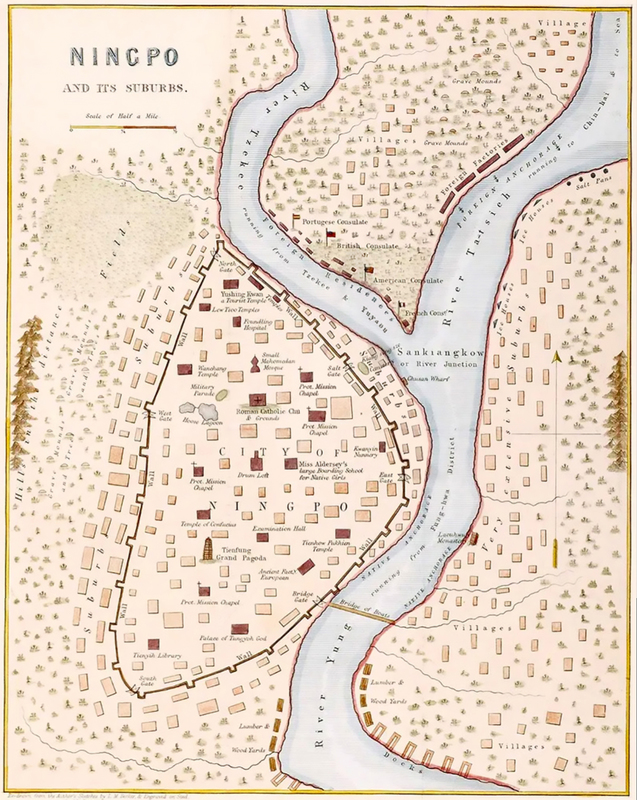City of the Peaceful Wave
The city of Ningpo, founded in 1333, is defined by its ancient, 30-foot-high city walls, which enclose a teardrop-shaped area of about three square miles and are bordered on the north and east by the Ningpo River. Starting at the top of the teardrop and moving clockwise, the city’s gates include the North Gate, the Salt Gate, the East Gate, the Bridge Gate, the South Gate, and the West Gate. A number of suburbs were built around the city walls, and when foreigners began moving to Ningpo in the 1840s, they established residences on the river’s northern bank, opposite the section of city wall between the North Gate and the Salt Gate. The Presbyterian Mission built a chapel, medical dispensary, and several houses on the North Bank in the 1840s, and when the Martins arrived in 1850, they moved into a house on the compound’s northwestern edge.
In a letter to her parents in November 1850, Maggie relates her impressions of her new home: “When I first came to China, I was much struck with the oriental appearance of things, the temples, high walled cities & houses, the lodges in the fields, & now, things have become familiar, I feel perfectly at home among them all.” Maggie’s friend Helen Nevius describes the streets of Ningpo in her memoir: “The streets of the city vary in width from four to ten, and possibly in some places to fifteen feet. They are well paved, and are spanned by frequent ornamental stone gateways, or arches, which have been erected to commemorate the virtues of noted persons of former generations” (26).
In her November 1850 letter, Maggie goes on to describe the beauty of Ningpo’s setting: “I have never told you how beautiful the scenery is in this part of the world. We are entirely surrounded with mountains covered with pines and other beautiful evergreens. … We have a beautiful meandering river along whose banks we wind our course every evening.”




